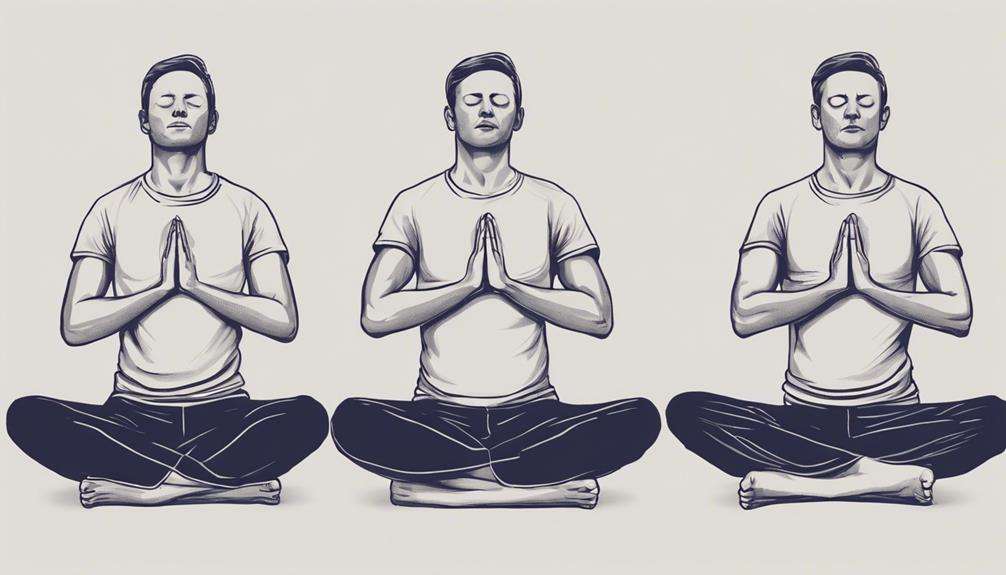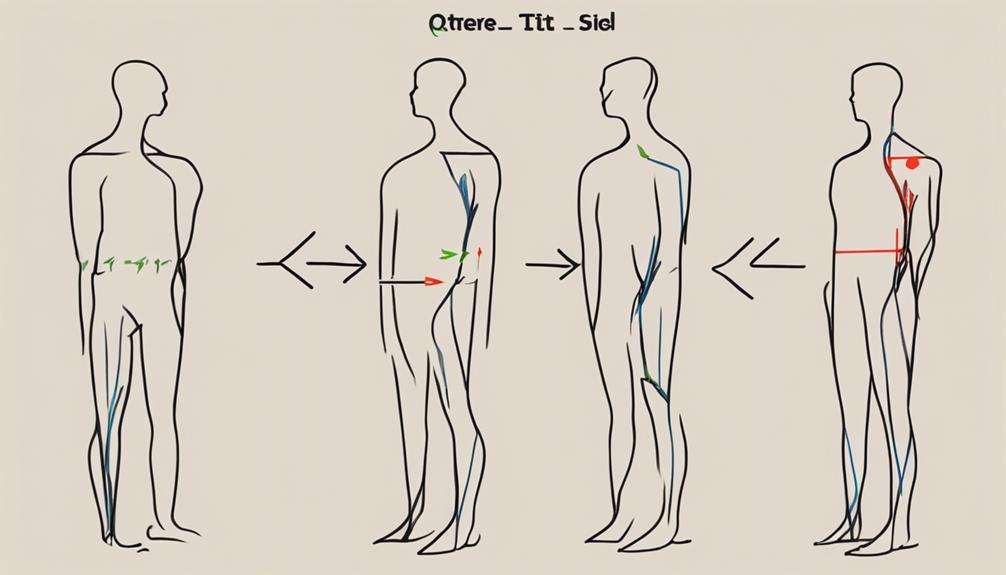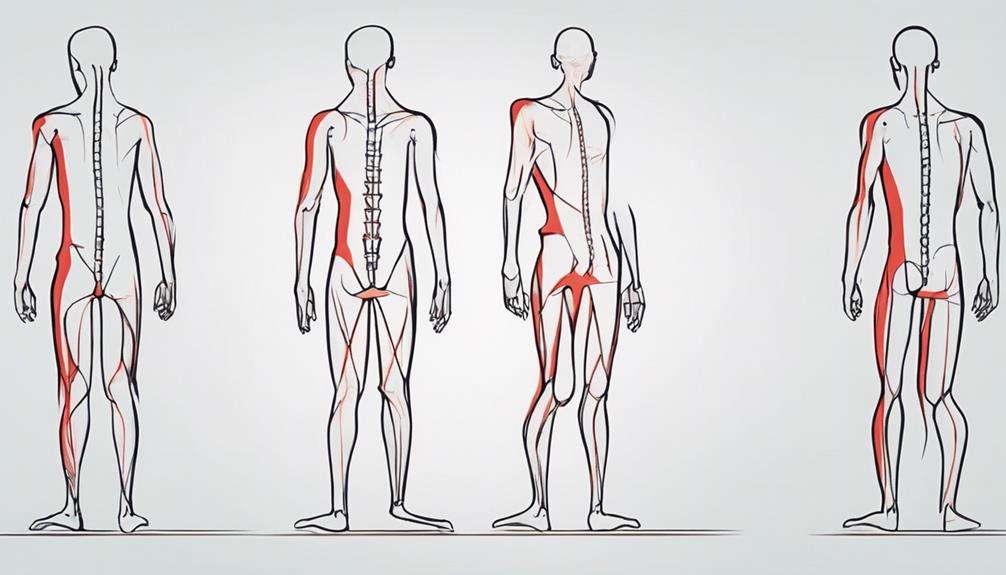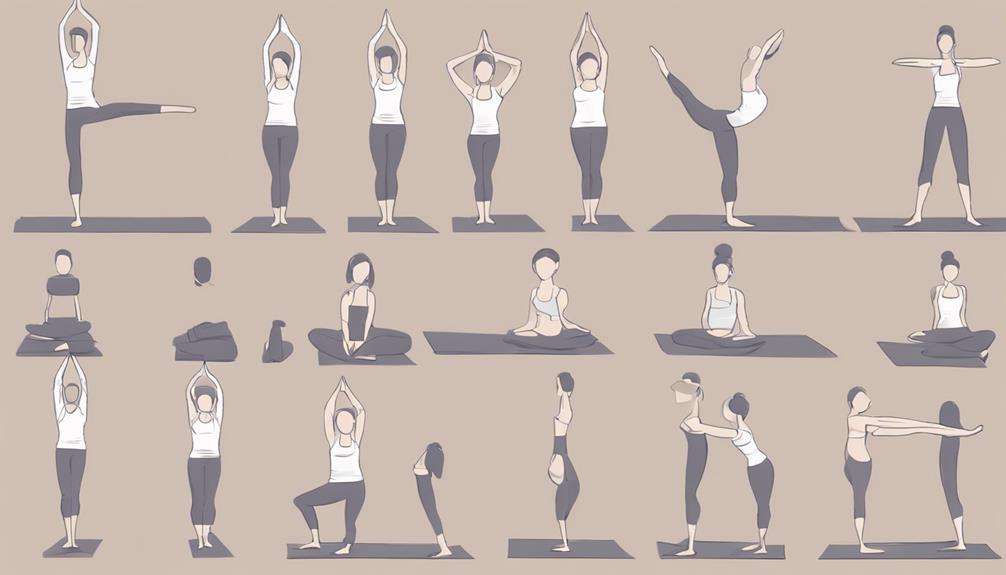To enhance your physical well-being, consider exploring the profound connection between mind and body for achieving posture wellness. By understanding how your mental state influences your physical alignment, you can discover a path towards improved overall health.
Through a combination of mindful practices and targeted exercises, you can reveal the potential for a harmonious relationship between your mind and body, leading to benefits beyond just posture.
Key Takeaways
- Mind-body alignment enhances posture naturally, reflecting emotions and well-being.
- Yoga and meditation practices strengthen core muscles and promote body awareness.
- Deep breathing cultivates internal balance, supporting overall posture stability.
- Core strength exercises like Pilates improve stability, reducing postural risks.
Importance of Mind-Body Connection
Embrace the profound significance of the mind-body connection for achieving peak posture wellness. Your posture isn't just about physical alignment; it's a reflection of your emotions, confidence levels, and overall well-being. When your mind and body are in harmony, your posture naturally improves, leading to reduced strain on muscles and joints, hence preventing pain and injuries.
Yoga Poses for Posture Alignment
Enhancing your posture alignment through targeted yoga poses can greatly strengthen core muscles, increase spinal flexibility, and alleviate back pain for improved overall wellness. Yoga poses like Mountain Pose, Tree Pose, and Warrior Pose focus on building core strength and enhancing body awareness to support proper alignment. These poses not only help in maintaining a straight spine but also aid in developing the muscles necessary for good posture.
Practicing Cobra Pose and Cat-Cow Pose can specifically target back pain issues by promoting proper spinal curvature and relieving tension in the back muscles. Forward Fold and Child's Pose are beneficial for stretching the spine and releasing any built-up tension, assisting in correcting posture misalignments. Incorporating poses like Plank Pose and Bridge Pose into your routine engages both core and back muscles, reinforcing a strong and upright posture. Regular practice of these yoga poses not only improves spinal flexibility but also encourages alignment wellness, leading to a healthier posture overall.
Meditation Techniques for Posture Wellness

Improving your posture through mindfulness meditation involves cultivating awareness of your body's alignment and promoting spinal harmony. By practicing meditation techniques such as body-scan meditation, you can identify and release areas of muscle tension that impact your posture. Through this practice, you develop a stronger mind-body connection, leading to increased posture awareness and better spinal alignment.
Mind-body harmony achieved through meditation can contribute considerably to a more upright and balanced posture. Regular meditation not only reduces muscle tension but also enhances your ability to maintain proper alignment throughout the day. As you deepen your body awareness during meditation, you become more attuned to the subtle signals your body sends about posture, enabling you to make adjustments for better posture support.
Incorporating meditation into your daily routine can strengthen the foundation of your posture, ensuring that you stand and sit with ease and grace. By focusing on the mind-body connection and promoting spinal alignment, meditation becomes a powerful tool for achieving and maintaining better posture.
Mindful Breathing for Postural Support
As you begin to explore the connection between mindful breathing and postural support, consider the profound impact deep breath alignment can have on your overall posture stability.
By engaging in breath awareness practices, you can cultivate a sense of internal balance that translates into improved posture and spinal alignment.
Embracing the power of your breath to support your posture is a fundamental step towards achieving long-term postural wellness.
Deep Breath Alignment
Have you ever considered how deep breath alignment can greatly impact your posture wellness?
Deep breathing plays a vital role in fostering a strong mind-body connection, essential for achieving ideal postural support. By incorporating mindful breathing techniques, you enhance your awareness of body alignment, aiding in spinal alignment and reducing muscle strain.
Proper breathing mechanics not only support your posture but also help in reducing postural imbalances. Consistent practice of mindful breathing can lead to improved overall posture wellness.
Posture Stability Through Breath
Enhancing your posture stability through mindful breathing involves engaging core muscles and promoting spinal alignment for best support and alignment. By incorporating correct breathing patterns, you can improve your posture stability and reduce tension in your body, particularly in the neck and shoulders.
Mindful breathing facilitates a deeper mind-body connection, allowing you to be more aware of your body positioning and alignment. This awareness can prevent slouching and promote proper postural habits, contributing to your overall well-being.
Deep diaphragmatic breathing enhances oxygen flow to your muscles, aiding in maintaining an upright posture. Regular practice of mindful breathing techniques can support your body in achieving a more relaxed and aligned posture, leading to improved physical health and well-being.
Breath Awareness and Posture
Improving your posture through breath awareness involves cultivating a deep connection between your body and mind to support spinal alignment and core engagement for enhanced stability and alignment.
Mindful breathing techniques can enhance body awareness, promoting better posture and spinal stability. By focusing on your breath, you can engage your core muscles, reducing tension in the neck and shoulders, which in turn helps maintain an upright posture.
Conscious breathing also aids in relaxation, preventing slouching and contributing to overall postural health. The practice of mindful breathing creates a strong mind-body connection, positively impacting posture and spinal alignment.
Incorporating breath awareness into your daily routine can lead to improved posture, increased stability, and reduced discomfort.
Mind-Body Exercises for Core Strength
Indulge in mind-body exercises that target core strength for a foundation of wellness and balance. By engaging in activities like Pilates and yoga, you can strengthen your core muscles, leading to improved posture and stability.
These exercises not only work on your physical well-being but also help in aligning your spine correctly, reducing the risk of postural issues. Core strength exercises such as planks, crunches, and leg raises specifically target the abdominal muscles, aiding in posture improvement and reducing strain on the spine and lower back.
When your core is strong, it acts as a support system for your entire body, allowing for better balance and overall stability. Embrace these mind-body exercises to not only enhance your core strength but also to achieve a harmonious connection between your mind and body, fostering a sense of holistic well-being and alignment.
Visualization Practices for Better Posture

Mentally envisioning proper alignment and positioning of your body can enhance postural awareness and lead to improved overall posture quality. Visualization techniques play a crucial role in cultivating this awareness, allowing you to focus on aligning your spine correctly.
By picturing a strong and aligned spine, you can break free from slouching habits, reducing strain on your muscles and joints. Engaging in daily visualization exercises trains the mind-body connection, enabling you to maintain excellent posture effortlessly throughout the day.
This practice not only corrects your posture but also boosts your confidence, alleviates back pain, and enhances your physical well-being. Embracing these visualization practices empowers you to take charge of your posture, ensuring that you stand tall and move with grace and ease.
Your commitment to visualizing correct posture will result in long-term benefits for your overall health and wellness.
Mindfulness Practices for Spinal Alignment
Enhancing spinal alignment through mindful practices promotes body awareness and supports proper posture. By engaging in mindfulness practices, such as deep breathing and gentle movements, you can increase your body awareness and focus on aligning your spine correctly. Mindfulness techniques help in relaxing tense muscles, reducing strain on the spine, and fostering mind-body harmony. This focus on alignment can assist you in maintaining a neutral spine position throughout your daily activities, reducing the risk of postural imbalances and related discomfort.
Through mindfulness practices for spinal alignment, you can develop a deeper connection with your body, allowing you to make subtle adjustments to your posture with focused attention. By incorporating these practices into your daily routine, you can improve your spinal health and overall well-being. Remember, mindfulness isn't just about being present in the moment; it's also about being present in your body, ensuring that it's properly aligned to support you in all that you do.
Balance Training for Posture Improvement
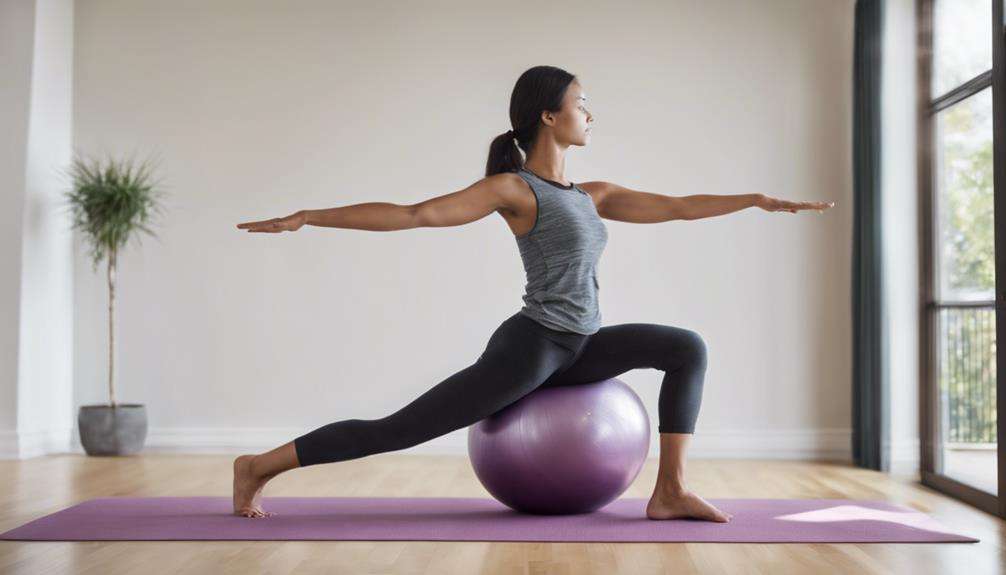
Engage in balance training exercises to enhance core stability and improve posture alignment for overall well-being.
By incorporating activities like standing on one leg or using a balance board, you can strengthen your muscles, boost body awareness, and support proper spinal alignment.
These exercises not only enhance core stability but also improve proprioception, helping your body sense its position and maintain alignment.
Research indicates that regular balance training reduces the risk of falls and injuries while promoting better posture. Consistent practice of these drills can lead to increased coordination and a more upright, aligned posture.
Integrating Yoga and Meditation for Posture Health
To promote holistic posture wellness, consider integrating yoga and meditation practices into your daily routine.
Yoga plays a vital role in improving posture by strengthening core muscles and encouraging proper spinal alignment. Through yoga poses such as Mountain pose and the Warrior series, you can focus on alignment and correct posture imbalances. Additionally, mindful breathing practiced in yoga helps release tension in the neck and shoulders, ultimately enhancing your posture.
Meditation, on the other hand, enhances body awareness, leading to better posture habits and alignment. By cultivating mindfulness through meditation, you can support the maintenance of good posture throughout the day.
When yoga and meditation are integrated, they create a synergy that fosters mind-body harmony. This harmonious combination not only improves your posture but also enriches your overall well-being. So, make space in your daily schedule for yoga and meditation to experience the transformative benefits they offer for your posture health and beyond.
Frequently Asked Questions
How Can You Optimize Your Physical Health?
To optimize your physical health, prioritize a balanced diet, regular exercise, stress management, proper ergonomics, deep breathing, and mindful movement. Embrace the mind-body connection through a holistic approach for overall wellness and liveliness.
Conclusion
You have learned how achieving posture wellness through mind-body harmony is essential for overall well-being.
Did you know that individuals who practice mindfulness meditation regularly experience a 40% reduction in back pain and improved posture?
By incorporating yoga, meditation, and other mind-body practices into your daily routine, you can enhance your posture, flexibility, and mental clarity for a more balanced and aligned life.
Embrace holistic approaches to wellness and prioritize your mind-body connection for utmost health.

